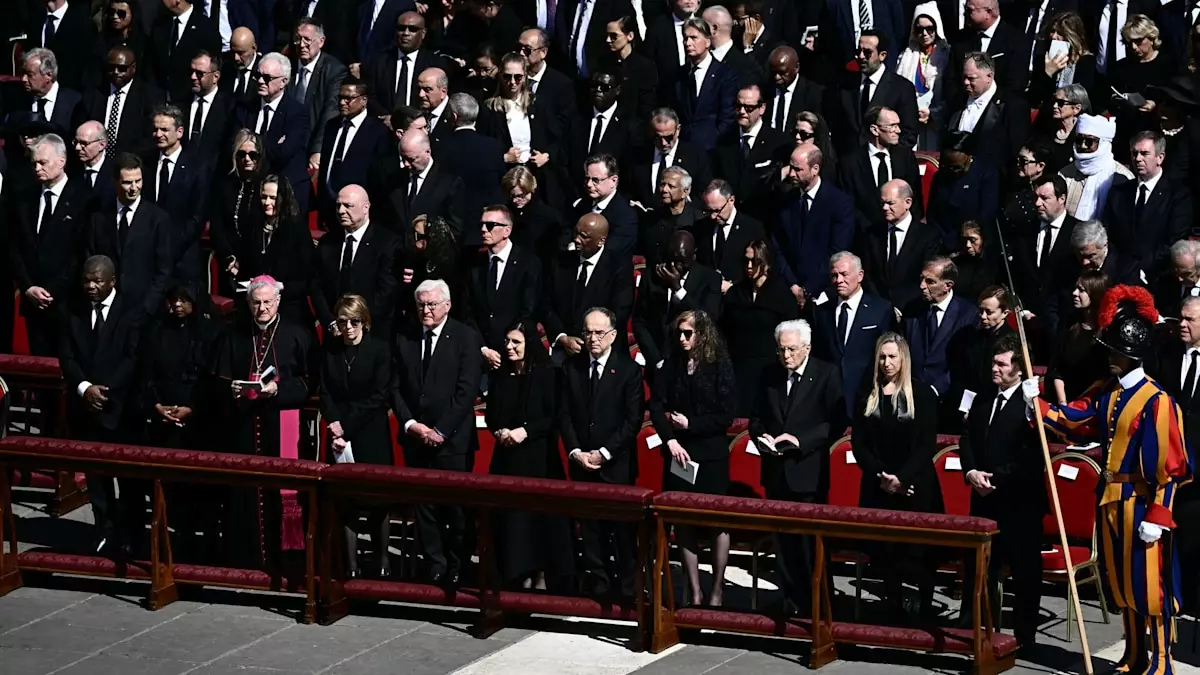The seating etiquette at significant global events holds more meaning than mere logistics. An example of this intricacy was highlighted recently during Pope Francis’s funeral in Vatican City, where the arrangement of dignitaries drew a mixture of curiosity and confusion from royal observers. Prince William’s positioning—further back among the attendees rather than at the forefront—sparked discussions that delve deeper into the complex interplay of diplomacy, tradition, and status.
Contrary to the expectations of many, the seating chart at such a monumental event wasn’t a reflection of the global standing of the nations represented. Instead, it was a carefully orchestrated design that adhered strictly to an alphabetical order—an approach rooted in the French language, traditionally seen as the diplomatic lingua franca. This detail underscores how historical practices have a significant influence on modern statecraft, even in the context of solemn memorials.
The Essence of Diplomatic Rank and Perception
For those steeped in the nuances of international relations, the Catholic Church’s handling of the seating arrangements reflects a deliberate strategy to quell the “big egos” of numerous world leaders. Cardinal Vincent Nichols aptly remarked on the genius of the Holy See’s ability to navigate the egos and expectations of high-profile attenders, including heads of state from different corners of the globe. While such arrangements may seem trivial, they play a crucial role in maintaining an air of equality while acknowledging the complex hierarchies of global governance.
The positioning of leaders like US President Donald Trump and various European royals emphasized this point. Trump’s relatively early seat juxtaposed with the later place of Prince William showcased how order can reverse the assumptions held by English speakers. The translation of ‘United Kingdom’ to ‘Royaume-Uni’ and its placement at the end of the list is a striking reminder of the intricacies involved in international diplomacy.
The Prince’s Role: Continuity and Change
Prince William attending the occasion on behalf of his father, King Charles, also speaks volumes about the evolving dynamics of monarchy and representation. This decision is a reflection of modernity in royal engagements, where protocol melds with practicality. Charles’s choice to delegate this important event to his eldest son resonates with a contemporary understanding of leadership, where the weight of tradition meets the necessities of present-day expectations.
Historically, royal representation at significant religious events often involved the reigning monarch. The ambassadorial role that William undertook serves to reinforce the continuity of ties between the Anglican Church and the Papacy. This duality underscores not just the respect for the deceased Pope but also the recognition of the shared spiritual and cultural heritage that binds both Catholic and Anglican traditions.
The Absence of the Princess: Family Over Formality
Another noteworthy aspect is Catherine, Princess of Wales’s absence from the ceremony. While royal engagements are imperative, they are often balanced against personal family commitments. This reality brings forth a relatable aspect of modern monarchy—an acknowledgment that personal lives, even under the rigorous observance of tradition, take precedence over formal duties.
The choice for William to attend alone, while still upholding the royal ethos, reflects contemporary societal values that prioritize family and personal connections. It invites discourse on how future generations of royals might navigate the rigid expectations of royal appearances against a backdrop of evolving social norms.
Concluding Thoughts on Monarchical Modernity
Ultimately, the discussions surrounding the seating choices at such grand yet solemn events reveal a web of protocols, sentiments, and cultural undertones that shape public perception. As the Royal Family continues to adjust to changing societal contexts while maintaining a connection to traditions, these layered dynamics offer compelling insights into how monarchy adapts within the frameworks of modernity and diplomacy.

